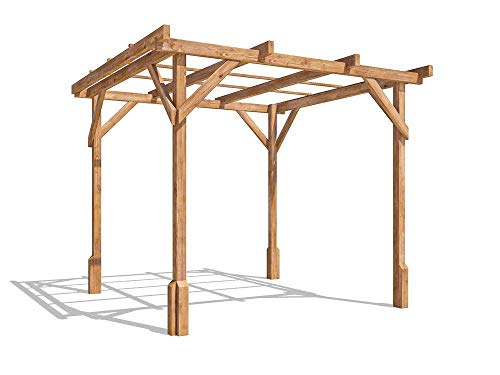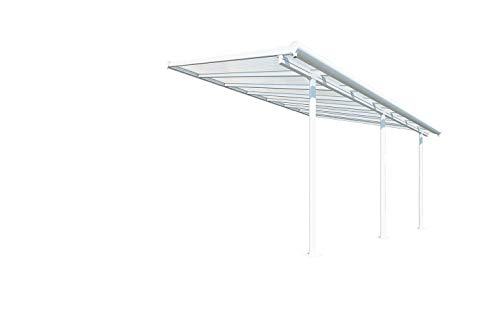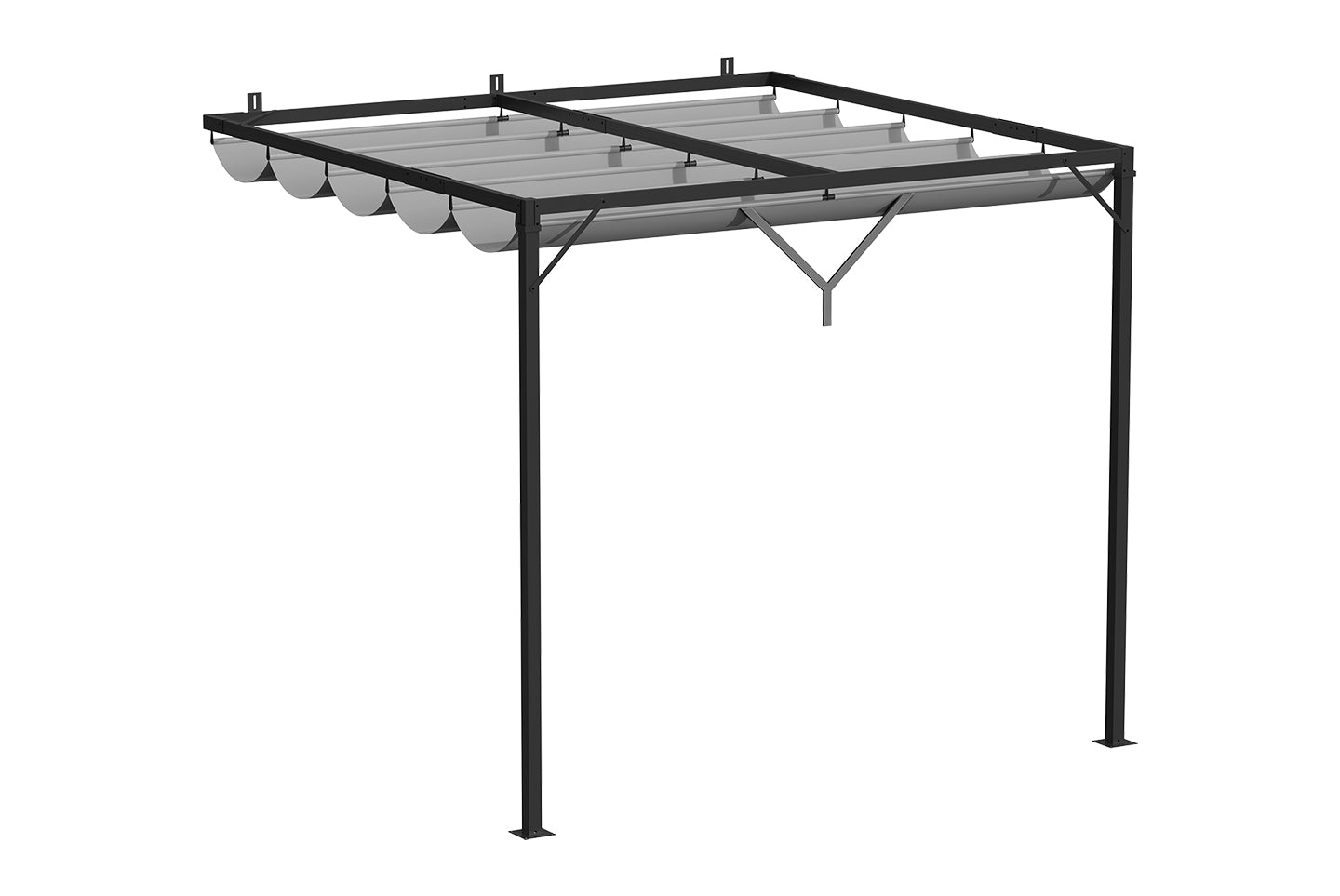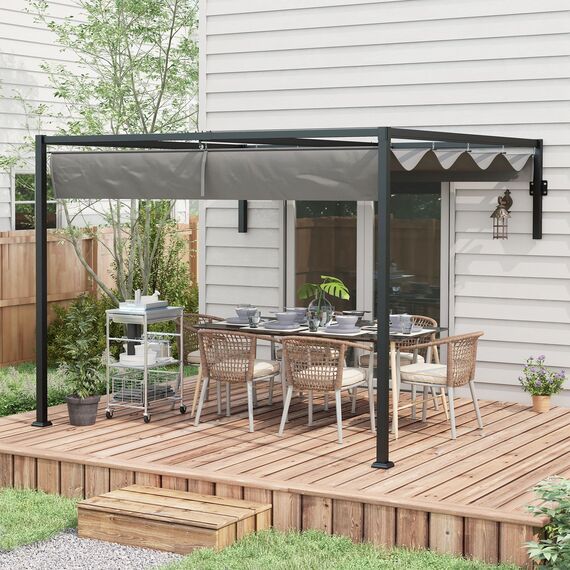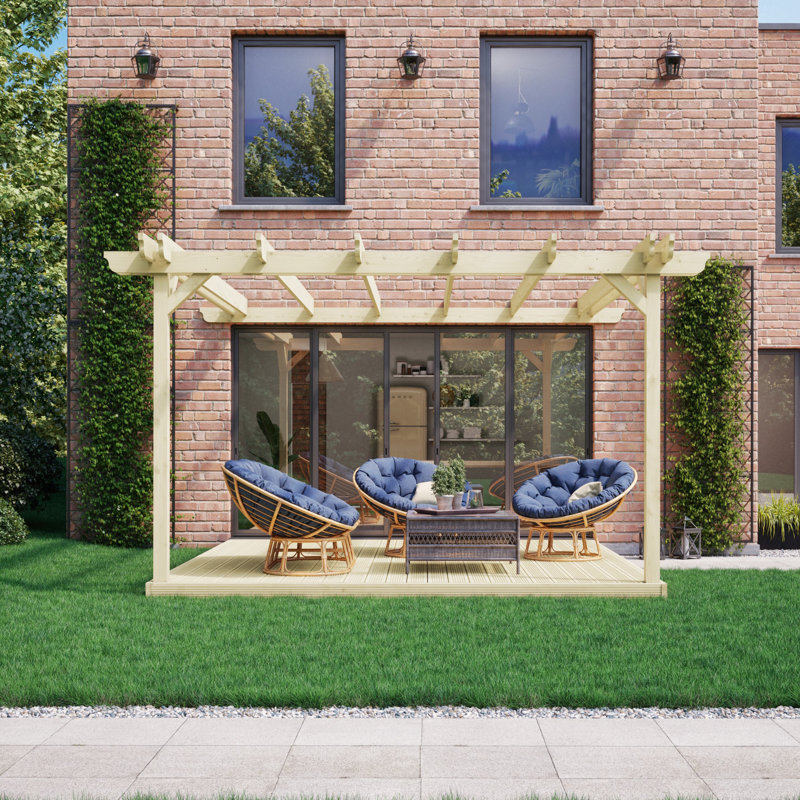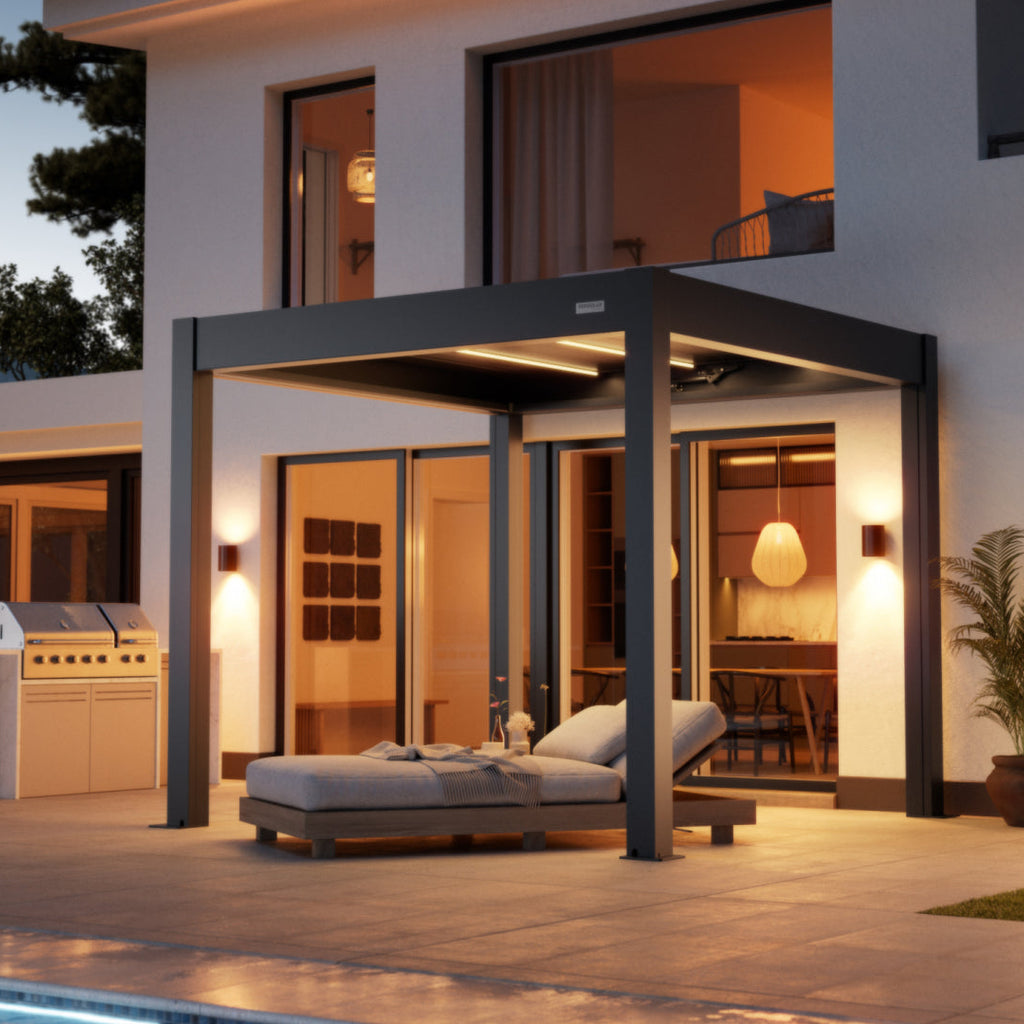Can you attach a pergola to a house? What you need to know if you want to achieve that seamless flow between inside and out
Attaching a pergola to a house can transform the way you use your garden, however, there are some key things to consider
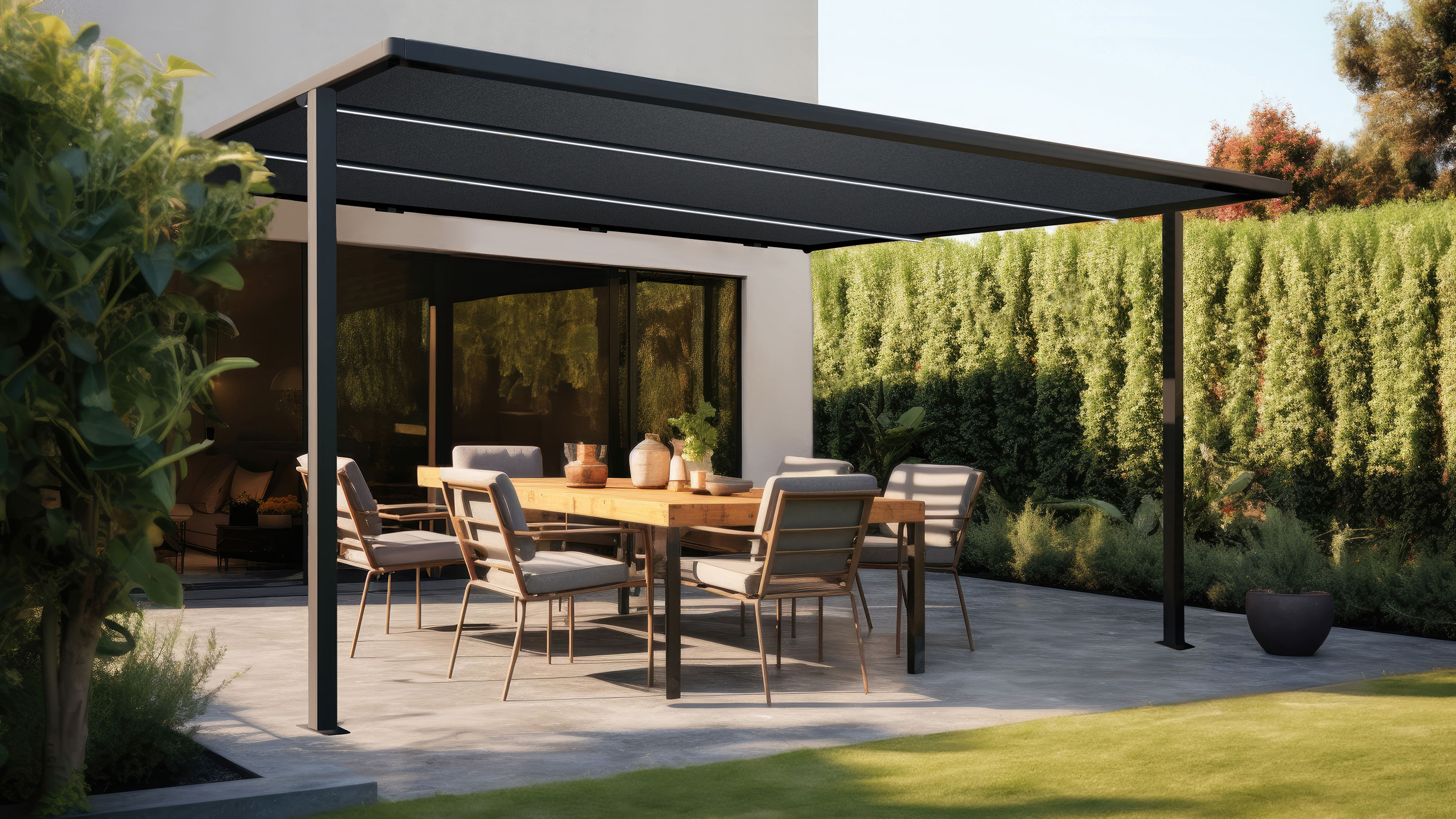

Figuring out if you can attach a pergola to the house is a must if your patio adjoins the property and you want to achieve that seamless flow between inside and out.
Thankfully, in most cases, you can attach a pergola to the house without the need for external permissions. There are also lots of different pergola ideas, so it's easy to find the right fit for your home.
'The modern pergola has seen a surge in popularity over recent years, propelled by their innovative features, sleek designs, and the ability to extend your living space into a outdoor living room without the need for planning permission or costly building works,' explains Reilly Gray, Co-Founder, Suns Lifestyle.
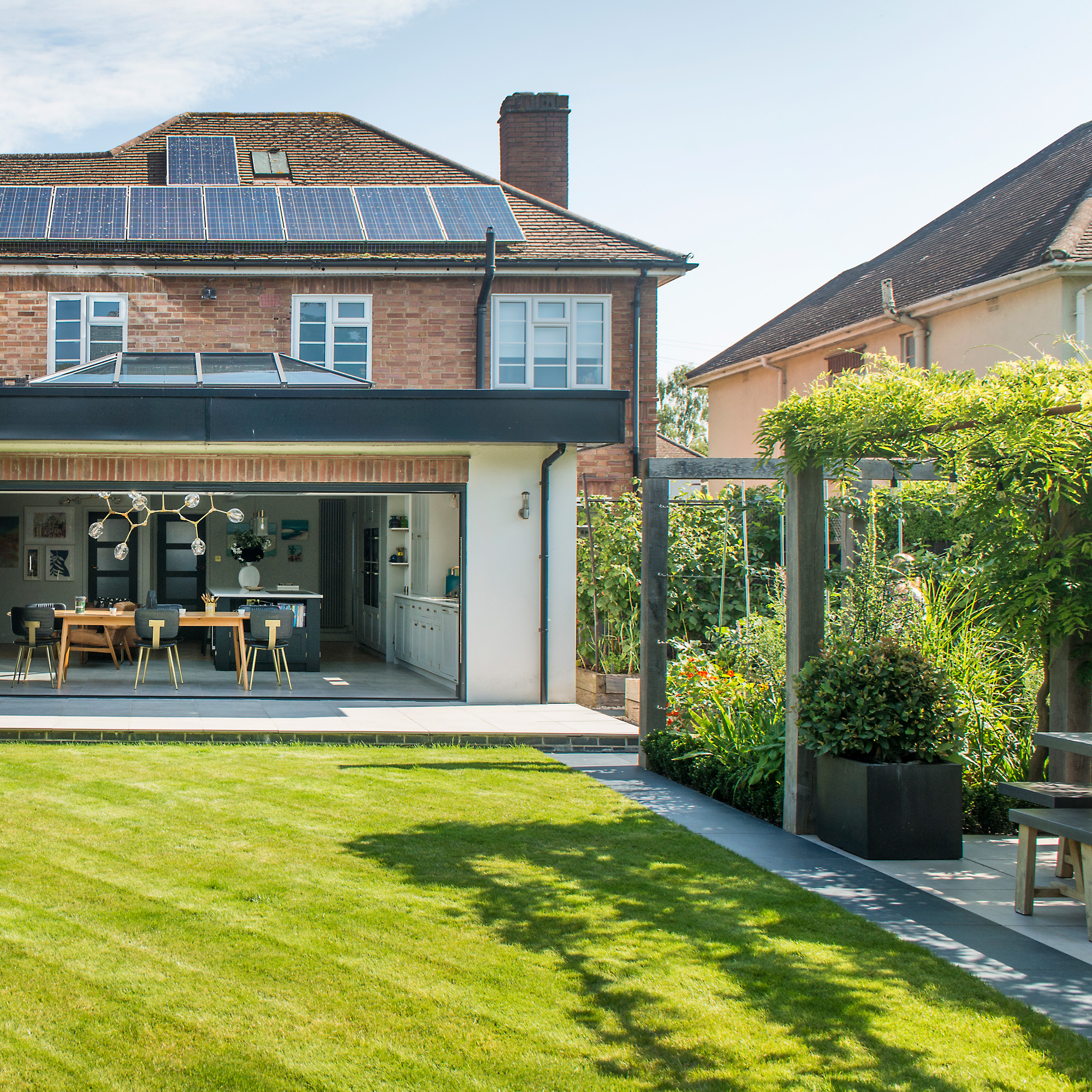
Can a pergola be attached to the house?
Yes, you can attach a pergola to a house, regardless of whether you purchase a ready-made design or build your own pergola. In fact, attaching a pergola to a house is one of the best ways to make a garden look expensive.
Typically, pergolas can be grouped into freestanding (where the majority of the weight of the structure is carried by the pergola's legs) or leaning (where the property takes the weight of the addition).
The choice between the two will be informed by the property's style and structure, and personal preference.
For most brick or wooden buildings, the most common method to attach a pergola to a house is with brackets. These are drilled into the exterior of the property, which then connect to the pergola.
Sign up to our newsletter for style inspiration, real homes, project and garden advice and shopping know-how
'For those seeking an all-weather solution, an aluminium louvred pergola is an excellent choice. It offers year-round flexibility and can be installed anywhere in your garden, including attached to the house,' says John Foster, exterior installation and service manager at Hillarys.
Where to buy a pergola
Choosing the right design
Choosing a pergola to attach to a house requires more consideration than a freestanding design.
'If your pergola is going to sit against the house, then you'll need to pay extra attention to door and window heights, as this will help guide which model you pick,' says Reilly Gray, Co-Founder, Suns Lifestyle.
'Also think about whether you'll use it in the summer months only or all throughout the year - if year-round use is what you're after then consider looking into pergola roof ideas – there are lots of designs with a retractable roofs that opens and closes to allow light in whilst protecting you from the elements. Side screens will also add extra protection from the wind, rain and provide shade.'
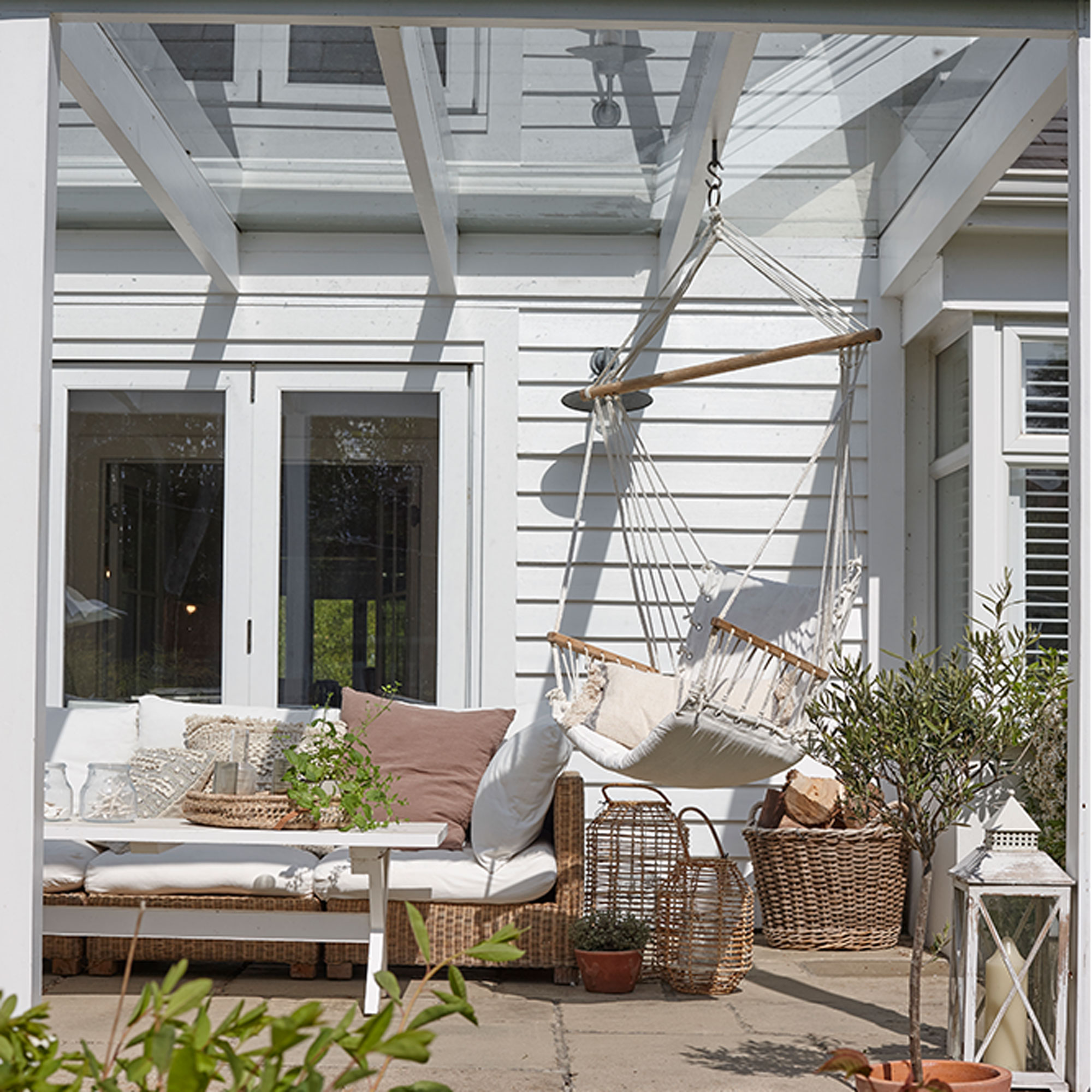
When can't you attach a pergola to a house?
Planning permission is one of the most important things you should consider before building a pergola – especially when you are planning to attach a pergola to a house.
Pergolas are classed as outbuildings in planning terms and therefore are subject to the same planning permission rules as greenhouses, garden offices and other garden rooms. This means that most pergola projects will be classed under permitted development. However, there are some exceptions to the rule.
'The main thing to remember is that the further away your pergola is from the property boundary or garden fence, the less likely it is that you will need to apply for planning permission,' says experts from Harbour Lifestyle.
1. You can't attach a pergola to a house if home is listed or in a conservation area
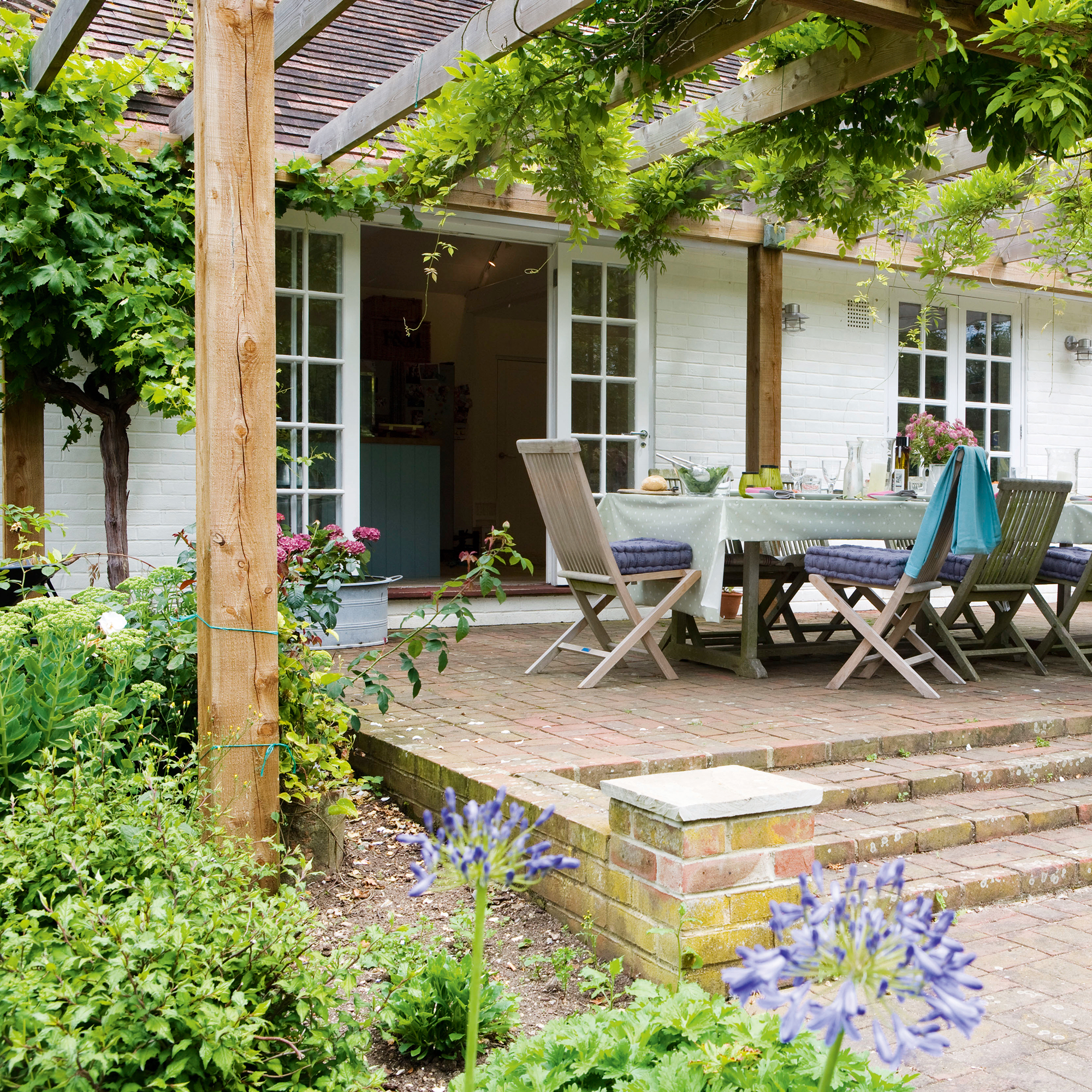
You need permission to attach a pergola to a house if your home is listed. For listed properties, you must apply for listed building consent, as if you attach a pergola to a house, you will affect the fabric of the property.
If permitted, there may also be limits on the materials and style you can install. This rule also applies to freestanding pergolas and awnings and similar rules also apply to houses in conservation areas.
2. You want to attach a pergola to the front or side of your house
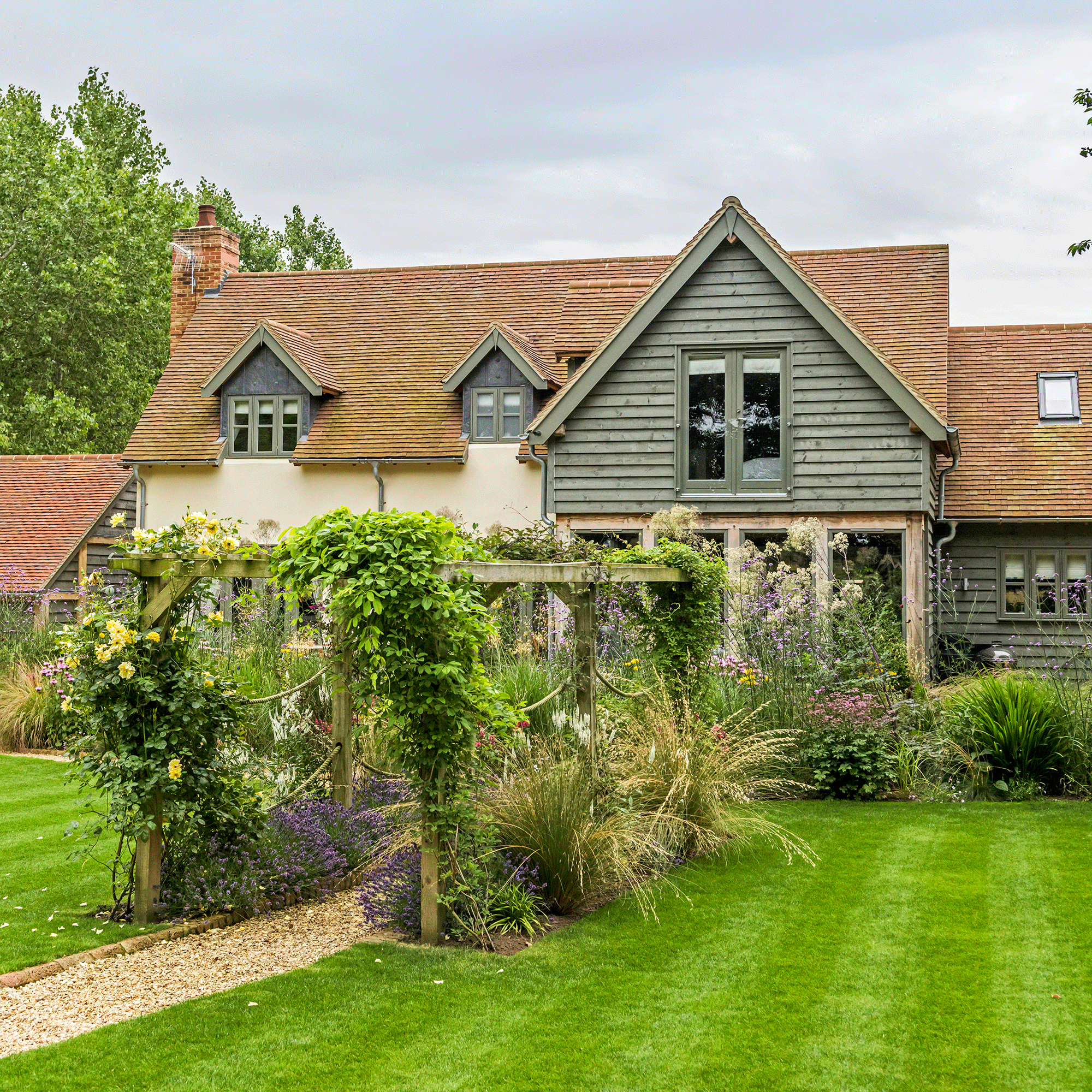
Additions to the front and side of the house aren't covered by permitted development in the same way as the back of your house, even if your main garden is the front garden.
This doesn't mean that you can't attach a pergola to the front or the side of your house, but you will need to get additional permissions from your local council to do so.
3. You want a large pergola
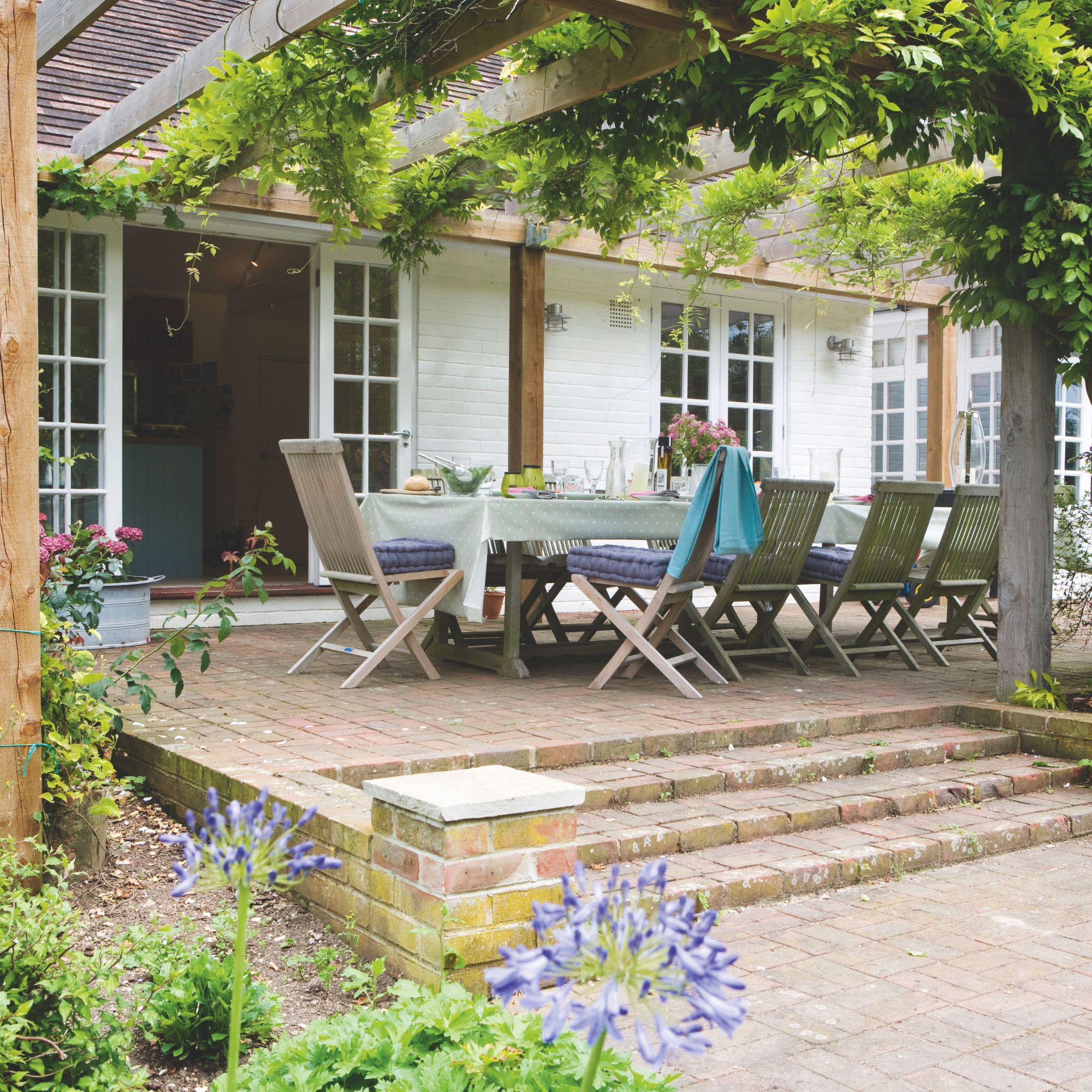
There are restrictions on the size of the pergola in relation to the garden – this applies whether you want to attach a pergola to a house or want a freestanding design.
'If your pergola is within 2 metres of the boundary, then it can be a maximum of 2.5 metres high,' says experts from Harbour Lifestyle. 'If your pergola is further than 2 metres from the boundary, then it can be a maximum of 3 metres high. If your pergola has a pitched roof (A-shaped) then it can be a maximum of 4 metres high.'
Ashley Hainsworth, Director of Cuckooland, adds, ‘you will need to seek planning permission from your local council if the pergola takes up more than 50% of the land around the existing building.’ This is something you seriously need to consider if you have a small garden or if you've built an extension under permitted development.
What to consider when attaching a pergola to a house
Be sure that you are attaching the pergola to the structure of the house, not just the cladding or facade. This will ensure that it is securely fixed and less likely to damage your property.
As with anything to do with the exterior of the house, it is also important to consider rain – there should be nowhere for water to pool, as this will lead to mould and rot. Adding flashing to the join between the house and pergola will seal the join and prevent water from getting trapped. You may also need to reroute guttering, depending on the design of your house. Installing a pergola so that it simply abuts the house, rather than being physically joined to it, is a much simpler option.
'Most louvred pergolas also have a built-in gutter system, which wooden designs don't have, and will allow for weatherproofing whilst having the option to let the sun in,' says Reilly Gray, Co-Founder, Suns Lifestyle.
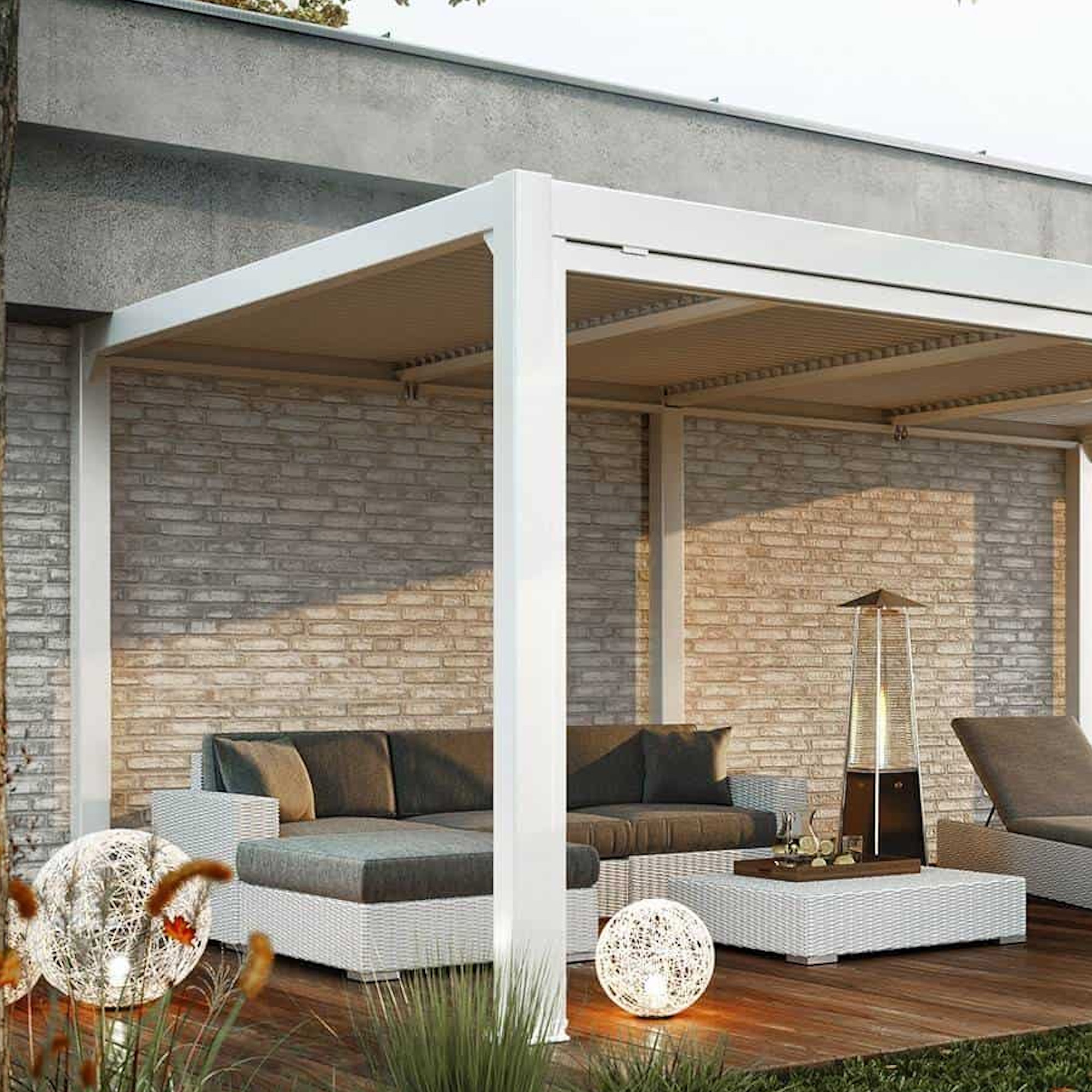
What are the alternatives to attaching a pergola to a house?
Freestanding pergolas can be installed to abut a house, without needing to be physically attached. With freestanding pergolas, you can still have the same sense of flow, shade and add some privacy without the worry about the new addition causing any damage to the fabric of your home.
Awnings are another alternative. These are fixed to the exterior of the house and create a canopy over a patio area.
'An awning brings more to your home than outdoor improvements; it also has positive benefits to your interior too. Blocking the sunlight from the outside ensures soft furnishings‚ furniture, or artwork won’t be faded or damaged by UV light‚ while the room itself remains cooler and glare-free,' says experts from Thomas Sanderson.
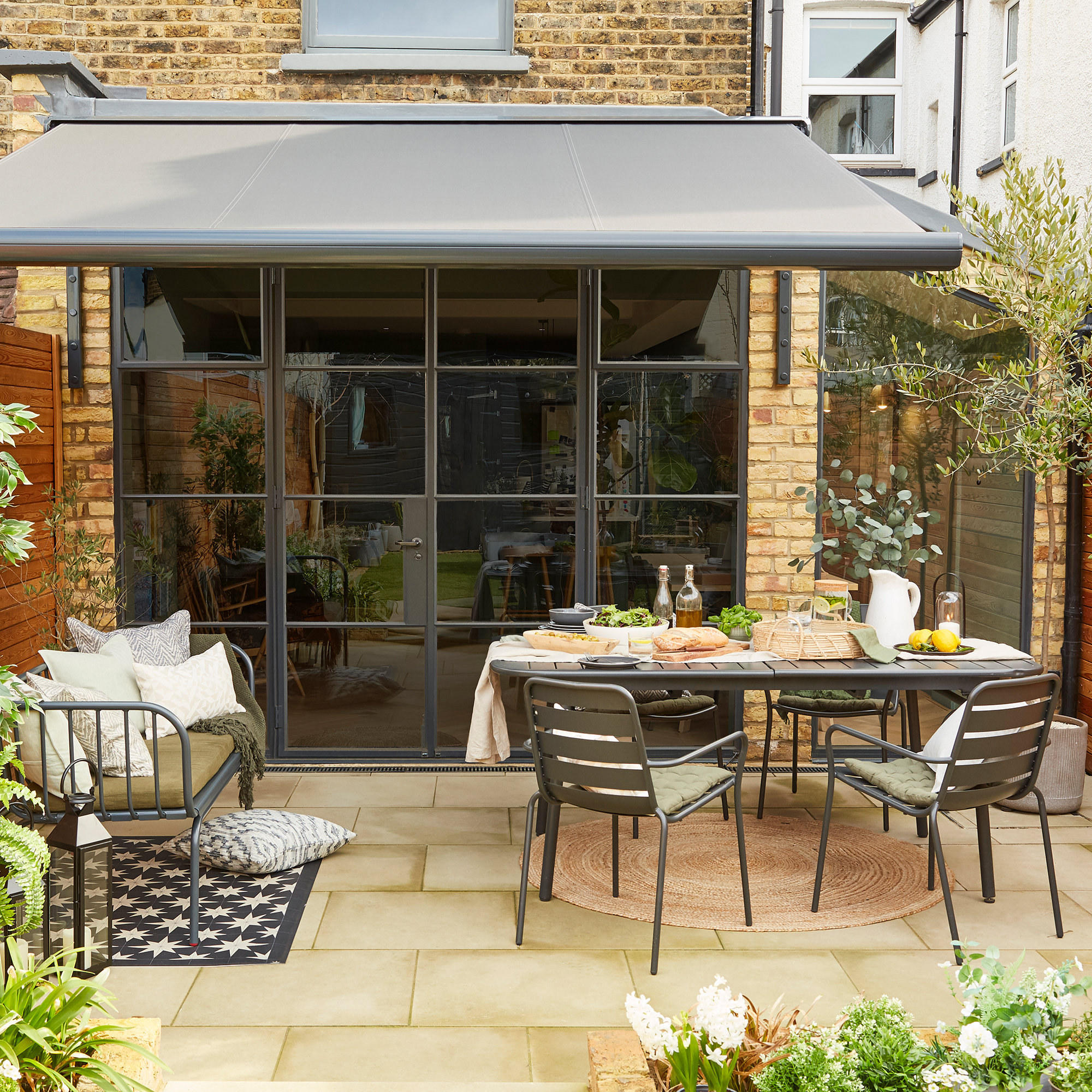
Awnings have a reputation for being quite a dated addition – usually a hand-cranked striped affair – however, modern designs are much slicker. Available in nearly an endless range of fabrics, modern awnings tend to be controlled by an app and can even include integrated heaters and garden lighting.
The same pergola planning permission rules apply as when attaching a pergola to the house. Planning permission is not necessary in most cases, so long as it doesn't lead to water running into your neighbour's garden or if you live in a conservation area or a listed building.
'Whichever design, style and size you choose, make sure you thoroughly check the assembly instructions and guidelines if opting for self-installation, or alternatively, take the stress away and use a professional installation service to ensure the longevity and integrity of your structure - ensure the pergola is bolted down for security,' says Reilly Gray, Co-Founder, Suns Lifestyle.

Holly is one of Ideal Home’s content editors. Starting her career in 2018 as a feature writer and sub-editor for Period Living magazine, she has continued this role also adding regular features for Country Homes & Interiors and the Ideal Home website to her roster. Holly has a passion for traditional and country-inspired interiors – especially kitchen design – and is happiest when exploring the countryside and hills of the Lake District. A keen gardener, she is a strong believer that you can never have too many houseplants.
